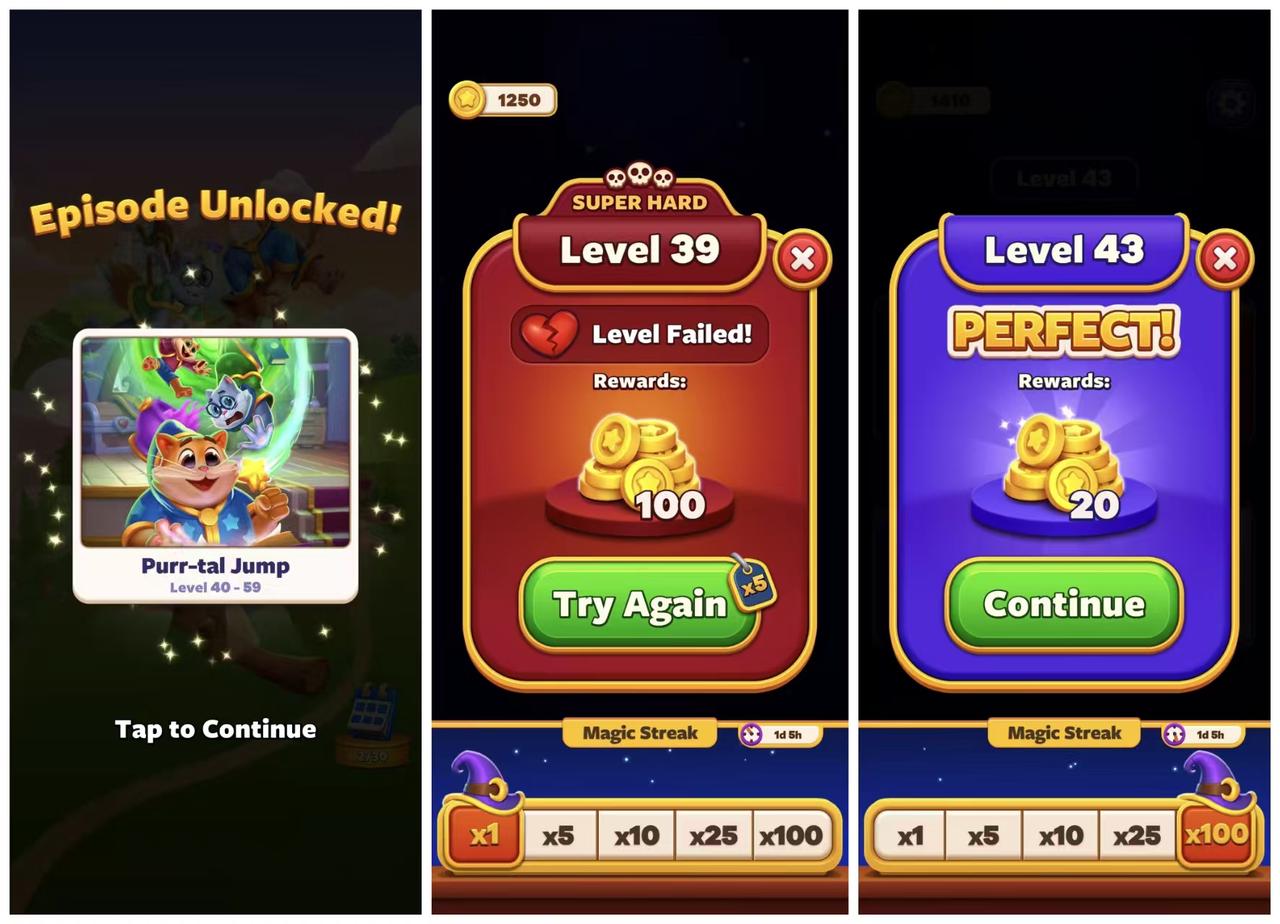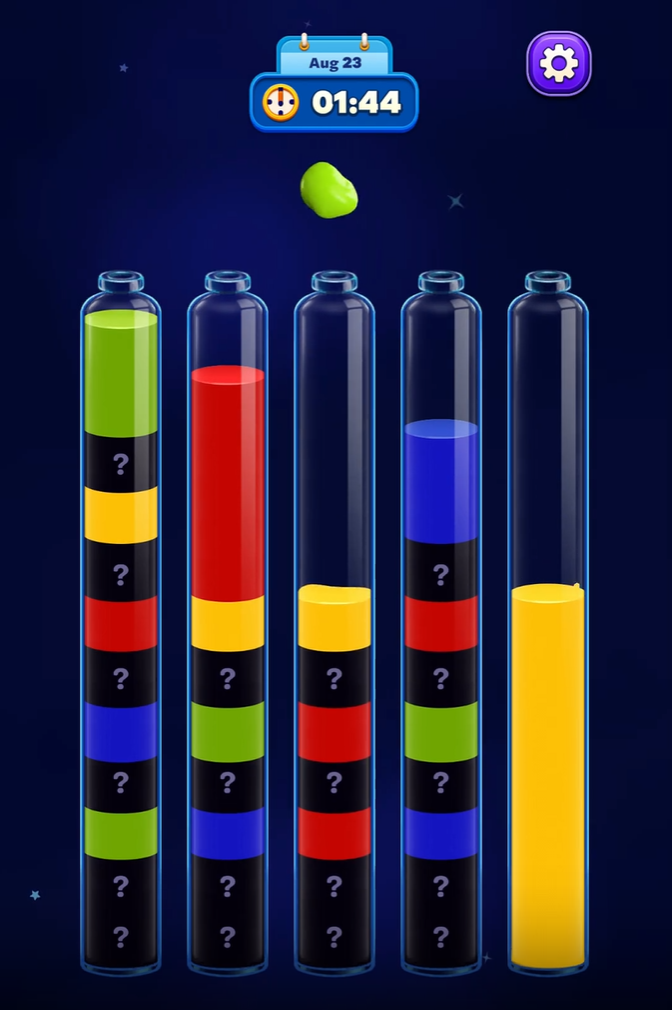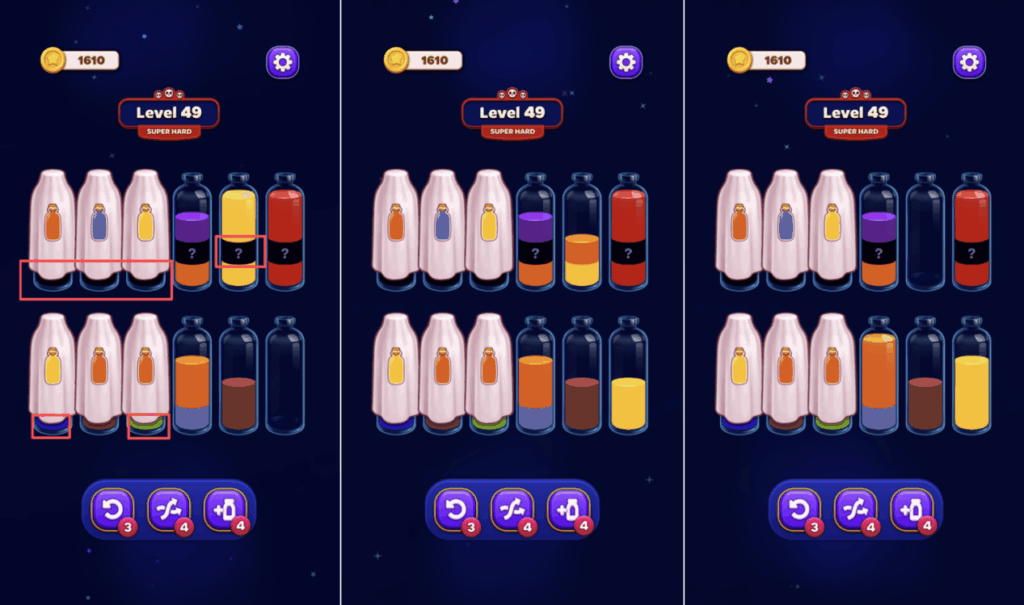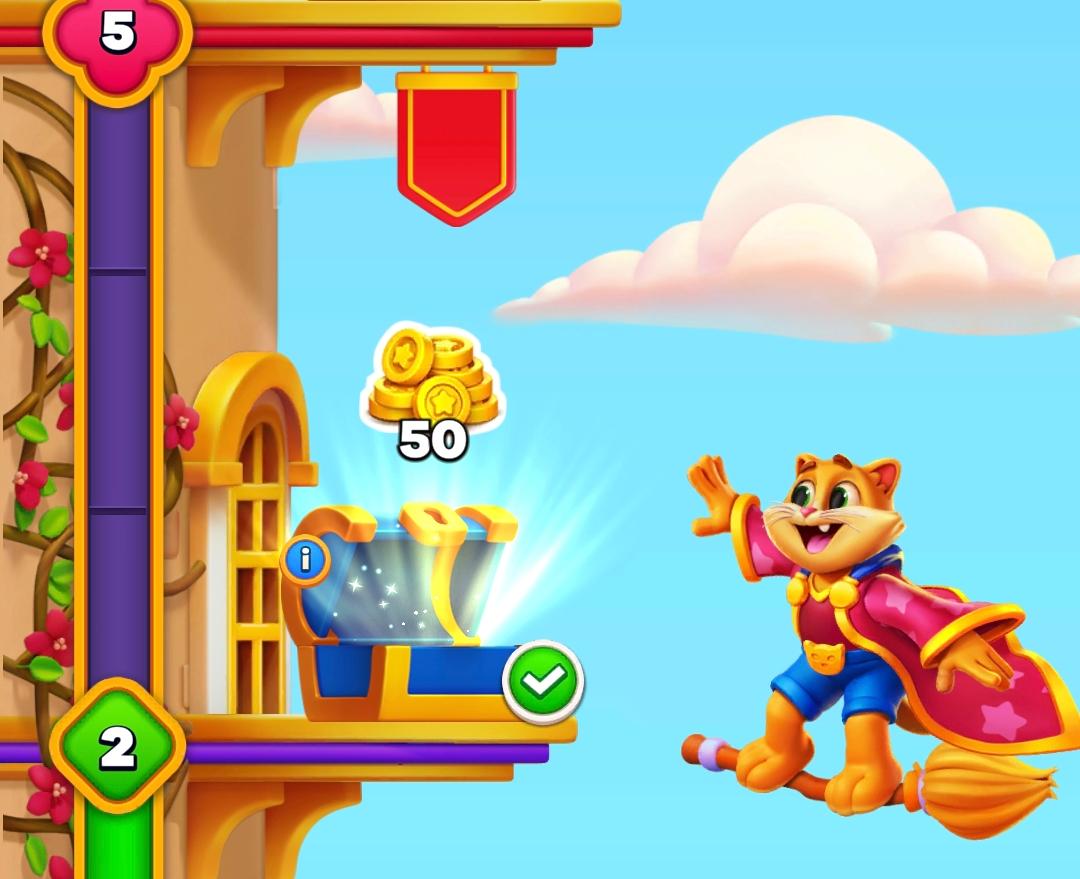I’ve recently become completely hooked on Magic Sort, a color-matching puzzle from Grand Games that launched earlier this year. The game has been on an impressive growth trajectory since securing $30 million in funding last December, already surpassing 10 million downloads worldwide with about 40% of its player base coming from the United States. It’s consistently ranked among the top 10 most downloaded iOS games in the US, primarily leveraging ad-based monetization.
A 9-minute uncut gameplay video:
After reaching level 59, I have to share what makes this game so compelling. While it features particularly challenging levels every 10 stages (like 39, 49, and 59), the core mechanic remains elegantly simple: you need to fill each tube with a single color to clear it, typically requiring just three moves of any given color. This isn’t traditional sorting – it feels more like “magical elimination.” As someone who analyzes game design, I find the Octalysis Framework perfect for understanding its addictiveness.
Octalysis Rating Table
| Core Drive | Score (1-10) | One-Line Description |
|---|---|---|
| Meaning & Calling | 4.5 | The magic theme feels superficial, with gameplay being the real driver |
| Accomplishment | 9 | Perfect difficulty curve with progress bars and streak rewards creating strong feedback |
| Empowerment | 6 | Limited strategic options, though choosing when to risk streaks adds some agency |
| Ownership | 6 | Solid collection systems and rewards that effectively maintain engagement |
| Social Influence | 8 | Teams and leaderboards successfully foster both competition and cooperation |
| Scarcity | 7 | Energy system and timed challenges create appropriate urgency |
| Unpredictability | 7 | Daily magic hat draws and random elements provide consistent surprises |
| Avoidance | 5 | Losing streaks reset progress but lack meaningful penalties |
Evaluation Notes:
Scoring range: 1–10. Higher scores reflect stronger implementation of the core drive and greater player motivation.
GScore (Gamification Score): Calculated based on the Octalysis Framework.
Octalysis Radar Chart

Detailed Analysis
1. Meaning (4.5/10)
While it’s light on story, the game’s real appeal lies in that deeply satisfying feeling of bringing visual order to chaos – it’s oddly therapeutic. There’s something genuinely pleasing about clicking test tubes and merging colors until each container holds just one pure shade, transforming messy arrays into perfect organization. In a world full of stress, this game creates your own little zone of calm.
2. Accomplishment (9/10)
The controls couldn’t be simpler – just one finger does it all. What keeps me coming back is the brilliant reward structure: stars for clearing levels, notifications about new unlocks (like “Cams unlocks at level 39”), and that brilliant “Magic Streak” system where multipliers climb with each consecutive win. The difficulty spikes every 10 levels hit that sweet spot between feeling challenging and achievable.

3. Empowerment (6/10)
The water-sorting combinations in the game are not fixed to specific levels but are automatically randomly generated. The level difficulty is determined by the number of bottles and the number of colors. This randomness ensures that each playthrough offers a different experience, providing virtually endless replayability.
4. Ownership (6/10)
The game includes conventional elements such as coins, diamonds, and various special effect items (e.g., “Broom Streak”), as well as new scenes unlocked through progression. However, Magic Sort goes a step further in fostering a sense of ownership by guiding players to subscribe to exclusive test tubes and unique skins, which carry a strong “prestige” value. Additionally, the limited-edition avatar frames and rewards from the “Weekly Cup” serve as coveted virtual assets that further motivate player investment.
5. Social Influence (8/10)
In Magic Sort, players can either create their own “Teams” or join forces with friends or strangers to complete tasks and earn rewards together. The social leaderboard, a staple feature, is segmented into multiple dimensions: individual players, countries (e.g., “USA Players”), and teams. By fostering relationships and building communities among players from diverse cultural backgrounds, the game may even spark creativity through interaction.
6. Scarcity (7/10)
Beyond the scarcity created by daily challenges (the September calendar) and streak resets, Magic Sort has introduced a calendar-style check-in event. Within a limited time frame, players are tasked with sorting liquids in extra-long test tubes. With its low difficulty and instant achievement feedback, this activity builds considerable anticipation among players – particularly those on a losing streak.

7. Unpredictability (7/10)
In addition to the small surprises brought by the magical hat lottery and the randomness of streak multipliers (such as the chance for x20), Magic Sort further enhances the experience with three types of “semi-masked” visual cues within levels: masking colors, water color ratios, and partial color reveals at the tube bottom. The chain reactions triggered by each move carry a degree of unpredictability, delivering a blind box-like thrill that offers immense unknown and surprise-filled moments.

8. Avoidance (5/10)
The penalty for failure is minor, but the addictive pull is incredibly strong. Even when a winning streak is broken and the Magic Hat resets your 10x multiplier and record back to 1, the game continues seamlessly. This leads players to proceed level after level, unable to put it down. Therefore, the loss aversion mechanism in Magic Sort does not operate in isolation—it’s an interconnected component of a larger, orchestrated gamification strategy.
Conclusion
While similar gameplay mechanics have long been established, the success of Magic Sort lies in its masterful application of gamification principles atop these classic foundations. It excels at managing the player’s psychological and emotional experience throughout the journey—offering just the right balance of challenge and strategic planning without becoming mentally taxing.
Personally, what I appreciate most is its visual design: restrained yet pleasing. While not the most critical element, it’s absolutely indispensable.
[Read More] https://us.09gamereview.com/blog/
[YouTube] https://www.youtube.com/@09GameReview


Leave a Reply